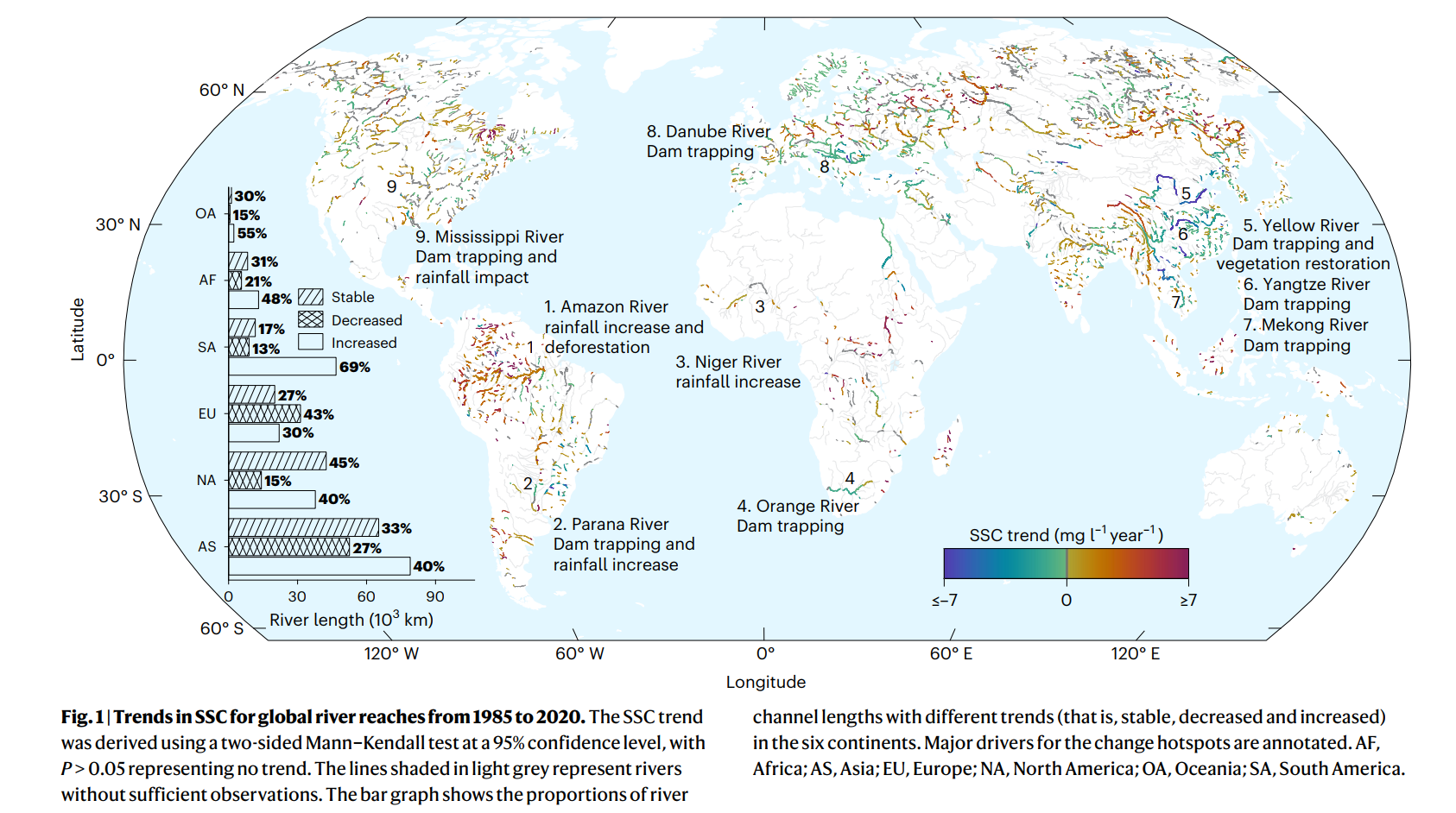Abstract: Fluvial sediment transport, a key pathway for global biogeochemical cycling, has changed markedly in the Anthropocene. However, disaggregating the compound effects of anthropogenic stresses on fluvial sediment transport at the global scale remains a challenge. Here we map the suspended sediment concentrations for global river channels, based on satellite observations, between 1985 and 2020, and estimate long-term changes in land–ocean sediment transfer. We find significant (P < 0.05) changes in suspended sediment concentrations in 67.8% (3.2 × 105 km) of the examined river channel length, with 43.4% (2.05 × 105 km) displaying a significant increasing trend, driven mainly by rising rainfall erosion and climate warming. Consequently, a global net increase (+0.58 Gt year?1) in land–ocean sediment flux has been observed over the past four decades, despite sediment trapping by recently constructed dams, mostly in Asia. Our study provides a new baseline for source-to-sink fluvial transport in the Anthropocene that can inform global water resource management and delta management and protection.

CITATION
Sun, X., Tian, L., Fang, H. et al. Changes in global fluvial sediment concentrations and fluxes between 1985 and 2020. Nat Sustain 8, 142–151 (2025). https://doi.org/10.1038/s41893-024-01476-7

